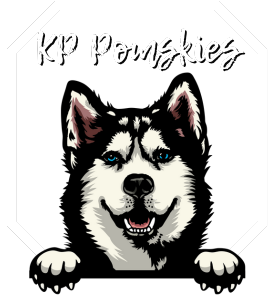Why are genetics so important in the progression of the Pomsky? And why are breeders adamant about the breeding adults with clear Embark panels?
DM, “Degenerative myelopathy, also known as chronic degenerative radiculomyelopathy (CDRM), is a disease affecting the spinal cord, resulting in slowly progressive hind limb weakness and paralysis. The symptoms result from degeneration of the white matter of the spinal cord.” (quoted from VCA Hospital), recessive genes are in about 40% of the Pomsky population.
Von Willebrand Type 1 - This is the most common bleeding disorder among dogs. And it is present as a recessive gene in approximately 10% of the Pomsky population. The disorder is characterized by a low concentration of vWF in blood. While vWD Type 1 can cause serious bleeding problems, it is generally less severe than the other two types of vWD and can be alleviated by treatment.
Canine Multifocal Retinopathy - CMR is typically only identified when a vet examines the back of the eye which, in dogs with CMR, reveals multiple retinal abnormalities that range from small, flat folds (called "retinal folds") to larger, irregularly edged raised lesions (called "geographic lesions").
These diseases primarily come from the Pomeranian side of Pomskies. Overall, Pomskies are extremely healthy dogs, with very few reported issues, and reputable breeders constant check is continuing to prevent these things from entering the Pomsky population. We have noted very few additional recessive diseases in the population, and the ones we have, have been from dogs that carry other breeds in their lineage that should not be in a Pomsky. Check out my comparison of Pomsky vs other small arctic breeds here.
—————
The above recessive genes of these diseases does not affect the adult dogs, however, they do have to be paired very carefully so as not to risk these terrible diseases in the offspring. When looking for a puppy, it is imperative that you choose breeders that Embark test their dogs and that 2 recessive trait dogs are never bred together.
I’ve seen where there are breeders (not good ones) actively breeding dogs that are producing DM, and do not care. It’s disheartening, but fortifies my stand that it’s necessary to control this while our crossbreed is still in the infancy stage and before we close our studbooks and lock in these things.
See below for a graphic that explains more information on how genetics work with recessive genes.

